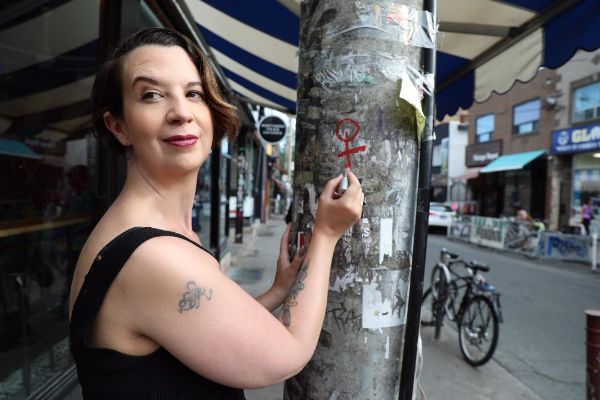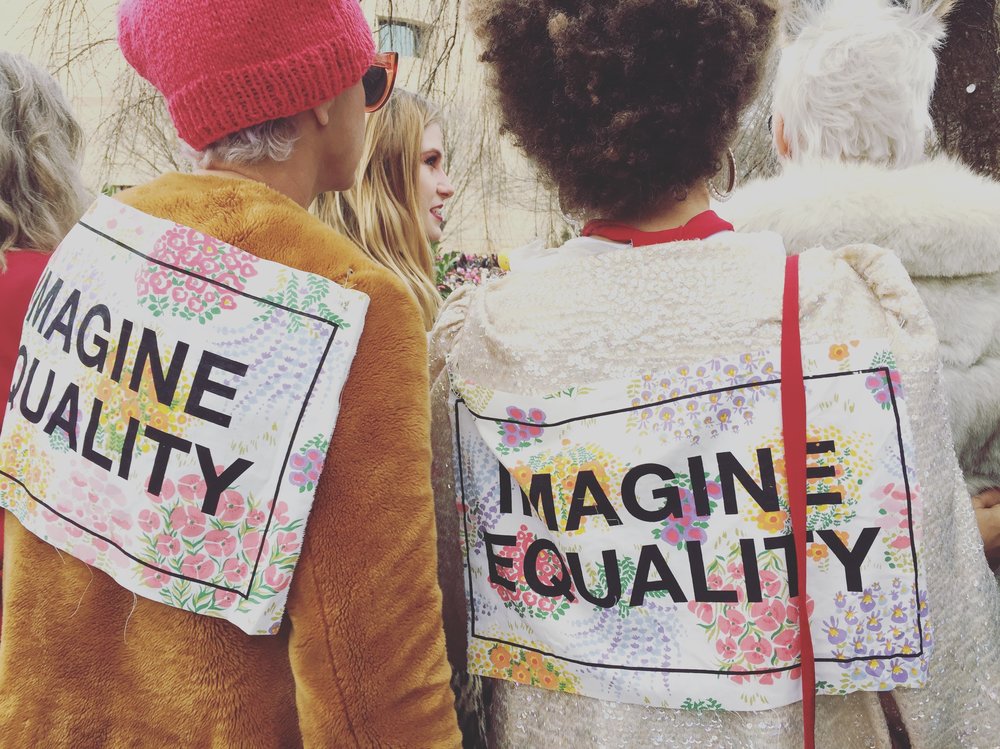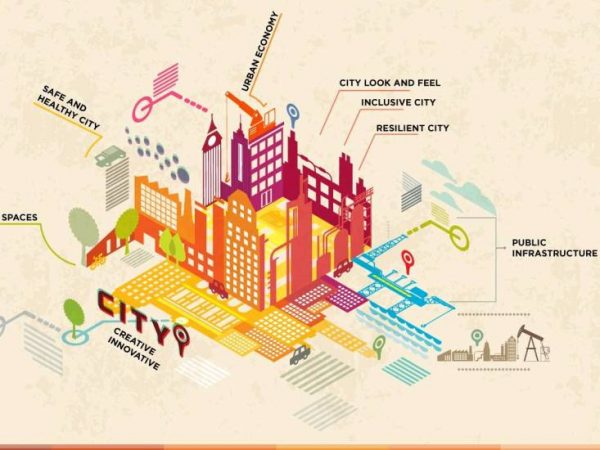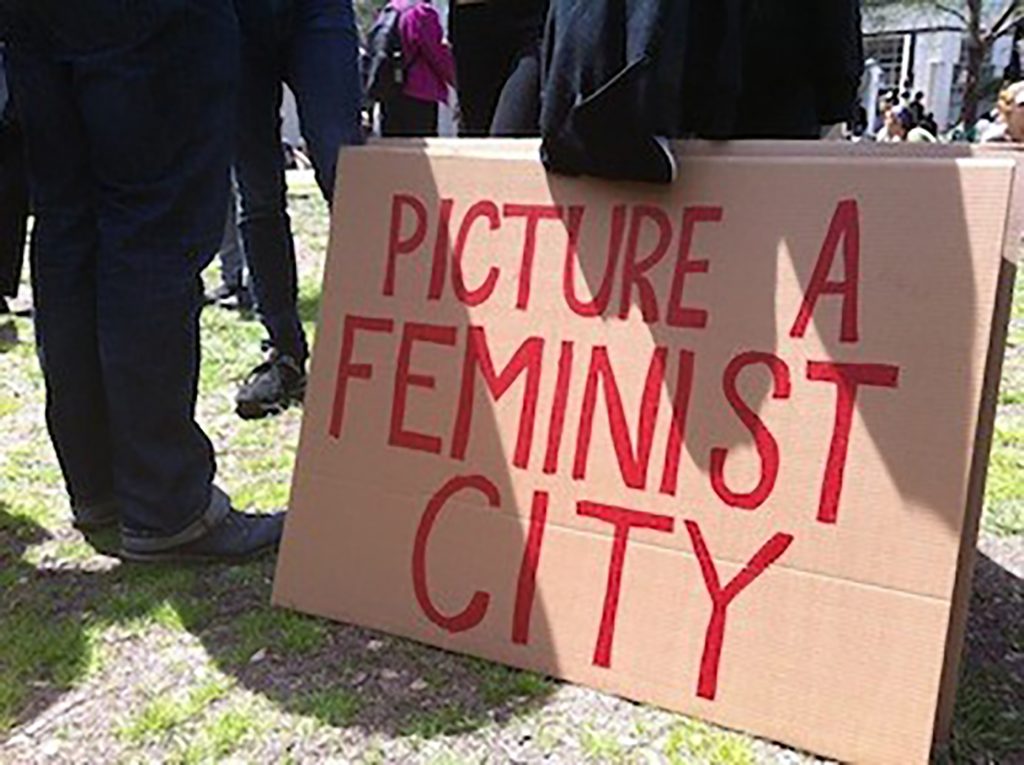
Photo by: ANDREW LISHAKOV on Stocksy
“woman screaming loud behind transparent foil”
PK’S VIEWPOINT
The Canadian (one of over 200 general elections in the world this year) federal election is on and therefore the mudslinging has begun. Hauling out frightening homophobic and misogynist speeches from one leader’s past, deeply hurtful racist blackface photos from another’s, with more to come, for sure. I hadn’t planned on digging into the election in this newsletter, but with the trajectory of Canada’s future at stake, how can I not?
To me, elections are like spring cleaning. They are a time when we pull things out into the light and re-examine our priorities: What do we want to keep and what we can live without. We conjure Marie Kondo and think about which candidate or party (left-brain analysis aside) sparks joy. We move aside the heavy furniture and take the parliamentary rug out for a good shake— even a beating—in the open air. Not surprisingly, a lot of crud can accumulate in four years.
If we think about elections in this way, my over-riding question in Canada’s upcoming federal election is this: Do we need a new rug or are we better off cleaning up and repairing the one we already have? Can that rug still be useful, can it even give us joy?
In my own efforts to stay informed, I found lots of election analysis and tools which name their idea of key issues and where each party stands: CBC’s Canada Votes, the Globe and Mail, Vice Magazine’s “Everything You Need to Know About…..” series, and the Maclean’s magazine election issue.
But not one of these mainstream sites name women’s equality or gender equity as a key election issue. Incredible, considering women and women-identified people represent 53% of the population. You will see Indigenous issues, crime, students, immigration, manufacturing, and climate change. But gender? Nada. Childcare crops up on one or two, but surely that is an issue for all genders and not the sole concern of women.
As the YWCA “Up For Debate” initiative points out, there has not been a leaders debate on women’s issues in more than 35 years. What were we concerned about then? Reproductive rights, domestic and sexual violence, economic equality, equal political representation? Those issues remain deeply relevant even though, yes, it’s 2019.
So how do we find out where the major federal parties stand on reproductive rights, pay transparency, gender-based violence, closing tax loopholes that benefit only men, the chronic state of funding instability undermining women’s organizations and social movements, or how innovation and economic development dollars continue to favour male-led industries? What about their commitment to new pay-equity legislation, using gender-based assessment tools in policy making, or support for the new Equality Fund and the Women’s Entrepreneurship Fund?
We tried. We found almost nothing. We at LiisBeth, together with our readers, obviously need to work on changing that. In the meantime, we gathered what few articles and sites that might help you rate the federal parties on issues of particular concern to women and, really, should concern everyone:
-
What Has Four Years Under a “Feminist” Government Done for Canadian Women? by Sarah Boesveld
-
Oxfam’s Feminist Scorecard 2019 (for a global perspective)
-
Feminisms, Elections and our Ontario and Canadian Feminist Souls
-
Gender equality and the election: what role will feminism play in the campaign? by Joanna Smith
-
5 Ways Gender Equality Benefits Everyone by Jessica Howard
If you are ready to take action, we recommend you send a letter to election candidates to tell them you care about gender equality. The Canadian Women’s Foundation has made this action simple. Click here to send a letter now.
So, in sum, does the current rug still spark joy, despite all the crud?
As for me, I watched Ontario, the province I live in, vote out a deeply unpopular female Liberal premier (who made mistakes, but by many accounts delivered on good policy) and replace her with a male Conservative, carny-style premier and team who campaigned on a buck-a-beer promise. Frankly, it’s been dark time here ever since.
All I can say is there are a lot of people who wanted a new rug, got one, and are now wishing they could get roll it up and toss it out, or at least get rid of the beer stains.

|
||
|
||
|
Clockwise from the top: Cynthia Erivo at TIFF 2019, Melody Kuku, Annabel Kalmar, Sarah Kaplan, Cherry-Rose Tan
NEW FEATURES ON LIISBETH
Margaret DeRosia curates a list of five must-see films for feminist entrepreneurs that screened at The Toronto International Film Festival (TIFF) earlier this month. 4 min read
Feminist entrepreneur Melody Kuku’s personal story of resilience redefines the meaning of strength, and is an example of how writing poetry can be an outlet to overcome crisis. 3 min read
Is direct trade the new fair trade? Daphne Gordon discovers why tea producers around the world are partnering with the Canadian-based tea distributor Tea Rebellion. 3 min read
And find out how corporate social responsibility is being reshaped by changing demographics in a Q&A with Sarah Kaplan about her new book, The 360° Corporation: From Stakeholder Trade-offs to Transformation. Feminist Freebie alert! Be the first to comment on this article on LiisBeth and recieve a free copy of Kaplan’s new book! 4 min read
Where can tech entrepreneurs get mental health support? Cherry-Rose Tan shares her story with Mai Nguyen that has inspired others to do the same. 3 min read

Leslie Kern / Photo by Mitchel Raphael
FEMINIST CITY: A FIELD GUIDE
City planning isn’t a new idea. Neither is thinking about how cities, neighbourhoods, communities could be set up in ways that support other sorts of social ideals, including feminist ones. Yet urban planners continue to exclude women’s needs and point of view which leads to isolation, employment barriers, and unsafe streets. When will this change? What impact does this planning have on not only women…but everyone?
Leslie Kern’s second book, The Feminist City: A Field Guide is a collection of essays that invites readers to question the design of urban spaces and ways cities can be more inclusive and safe for everyone.
Here is a 2.5 minute audio clip of Kern reading from the book. For the 6 minute version, click here.
LiisBeth spoke with Kern on the phone last week from her home in New Brunswick.
Check out the full Q&A here. 4 min read.
REMINDER!
Join LiisBeth and Jane’s Walk TO on September 29 in Toronto, for the city’s FIRST-EVER feminist city Walk & Talk. Walk tickets are free. Panel $15/pp. RSVP here. Feminist Freebie! We are raffling off three complimentary copies of Kern’s new book at the panel talk! But you have to be there to win!


Photo by Daniel Lepôt
CONGRATS TO OUR HIGH FLYING WINNERS!
Vanessa Trenton of Toronto WON the 2 x Venus Fest tix.
AND Paulina Cameron, CEO for Forum for Women Entrepreneurs (FWE) is receiving a A FREE copy of CV Harquail’s book, Feminism: A Key Idea to Business and Society
HUZZAH to you both!
LIISBETH FIELD NOTES

Dr. Ellie. Cosgrave | The Feminist City | TEDxUCLWomen
[Trigger Warning: mentions of sexual assault]
IMPACT BY DESIGN: TRANSFORMING URBAN PLANNING
In ‘The Feminist City’, Dr Ellie Cosgrave uses urban planning to disrupt our thinking about how designing decisions impact different groups based on categories of identity. By weaving in personal experiences and supplementing them with the industrial realities of civil engineering, Ellie shows us how we can recreate the city to enable diverse peoples and bodies to get the very most of the places we live. Through centralising feminist and social justice ideas, Ellie explores how we can fundamentally transform our cities to ensure that no one is excluded from public spaces, or from the resources and opportunities cities have to offer. (Source: https://www.ted.com/tedx)

Better Way Alliance on Twitter @BetterWayCAN
THERE’S GOTTA BE A BETTER WAY
It sounds like common sense that employees who are treated fairly would be good for business. But not all employers are created equal. And sometimes common sense…ain’t so common.
But the Better Way Alliance brings together Canadian business owners who value decent work, for everyone’s bottom line and the health of Canada’s economy.
Gilleen Pearce at Better Way Alliance told us the site is starting off as a small murmur but she hopes to build it up with businesses across Canada signing on. “The goal is to prove that support for decent work is building within the business community,” said Pearce, founder of Walk My Dog Toronto, a dog walking service with committed, trained staff who use compassionate positive reinforcement walk methods for your fur babies.
If you believe in a $15 minimum wage, add your name to the growing list of like-minded Canadian businesses at www.businessesfor15.ca
You can also join the Better Way Alliance conversation and share your story, your mindset, and your ideas about paid sick days, safe workplaces, fair scheduling laws and others ways to build and support Canada’s economy in a fair and just way.
Sign up to be profiled for free here. LiisBeth did!

WMRCC Executive Director Esther Enyolu (Far left to right), Iffat Zehra, and worker cooperative founders including Sandra Davis and Janet Bennet Cox.
WANT TO BE INNOVATIVE? CREATE A WORKER-OWNED CO-OP
The theme at this year’s Econous 2019 conference (a conference organized by Canadian CED Network in partnership with Community Futures Ontario) was Communities Leading Innovation. Keynote speaker Ted Howard, co-author of a new book, The Making of a Democratic Economy: How to Build Prosperity for the Many, Not the Few, set the tone by asking the 500 attendees why it was easier for most people to imagine the end of earth than the end of 20th century capitalism.
Damn good question.
Luckily, the conference featured two days of workshops and panels that made envisioning a different kind of economy easier.
Of the many ideas and experiments that were shared, one that stood out was an idea by the Women’s Multicultural Resource & Councelling Centre, based in Durham, Ontario; Help entrepreneurs create worker cooperatives.
This two-year project, launched in March 2019 is led by Iffat Zehra, an expert in the field. So far, over six women-led, worker owned cooperatives have been established under her guidance and grown as a result of her ongoing mentorship. Startup co-operative range in size from 5 to 20 women who are all trained in seven principles and as co-owners, the ten-steps of developing a co-operative. The co-ops range in types of industry but include personal support services for seniors, interpretation, cleaning, art, and sewing.
Given increasing inequality and precarious work places, it is not surprising to hear that worker co-ops are growing in number across North America.
Sadly, innovation and startup incubator ecosystems do not offer specialized training for entrepreneurs in how to create co-ops of any kind let alone worker, platform or consumer co-ops. Standard startup curriculum and innovation ecosystems at this point, still remain focused on neoliberal informed wealth creation for owners, versus wealth creation for the local community, co-creators and workers.
If more of us ask for training in co-operative startup formation, perhaps this will change.
Free downloadable! To see if your enterprise idea is right for a worker co-operative model, download a free self-assessment here.

Selene Vakharia, SMRT Women
SMRT WOMEN
On a recent trip to Whitehorse, Yukon, LiisBeth had a chance to catch up with Selene Vakharia, co-founder of SMRT Women, a growing women’s entrepreneur network who recently received $28,000 from the federal government’s Women’s Entreneurship Fund to help them build an online academy that aims to support women entrepreneurs in the far North by offering online bootcamps and courses. Vakharia is also a partner and co-producer of “She/Ze Leads the World” the first women’s leadership conference in the North being held November 19 to 21 in Whitehorse, Yukon. Keynote speakers include Vicki Saunders, founder of SheEO, and Paulette Senior, CEO and President of the Canadian Women’s Foundation.
Vakharia says one significant barrier to growth for many women entrepreneurs is limited business experience and a mindset that limits their imagination about what’s possible for both them personally and their enterprises. “We also noticed that when women try something and fail, they tend to translate that into: I suck at everything. Women are really hard on themselves. So they really benefit from participating in networks and groups. They also tend to be reluctant to spend money or invest in their business or invest in themselves in terms of coaching or learning because of the fear they will never make the money back. Confidence and experience is a huge issue.”
Given all the new federal support for women entrepreneurs this year, are things getting better?
Vakharia says: “Making more resources available to women is great, but it’s only a part of the answer.” For example, what good is access to startup money or empowerment programs when you are dealing with domestic violence (The Yukon one of the highest rate of domestic violence incidents per capita in Canada), mental health issues, or unaffordable child care options. When a new minin operation opens, research indicates a connection to an increase in alcoholism, sex trafficking, and sex worker abuse. Sometimes even being outspoken or having an opinion in a small community can be unsafe. We need a multi-pronged approach if we want to see women entrepreneurs thrive and generate new economic growth.
You can’t just throw money at women. You have to change the culture, and the system too.”
Vakaharia moved to the Yukon from Toronto without having ever set foot in the North.
No lack of confidence there.
DOWNLOADABLE! ADVISORY BOARD OR RED WINE CLUB?

Last month we announced our two new board members. This week we’re sharing GrowthWheel’s tips for entrepreneurs on how and why to form a board and the value of diverse opinions when starting or scaling up your business. Good advice in the PDF here.
What is the Feminist Enterprise Commons?
A new NON-ZUCKERBERG, safe, secure, online community where feminist entrepreneurs and changemakers who are building enterprises or working on side hustle projects can find others doing the same, learn about leadership and enterprise design, operations and growth in a like-minded feminist context, share stories, tools, learnings, stress test new ideas, source goods and services from each other, and above all, feel supported as enterpreneurial activists.
What is the definition of an enterprise?
According to the dictionary:
1. A project or undertaking that is especially difficult, complicated, or risky
2. Unit of economic organization or activity especially: a business organization
3. A systematic purposeful activity, i.e. digital media production is the main economic enterprise for visual artists
4. Or readiness to engage in daring or difficult action; showing initiative; being enterprising
What is a feminist enterprise?
All of the above along with express operational focus or mission related to social and gender justice.
WATCH FOR NEWS IN THE COMING WEEKS!

Photo by Daniel Lepôt of Team Canada in a 60-person formation skydive outside of Farnham, Quebec in August, 2019.
Lana Pesch is in the white helmet and teal rig on the bottom left of the formation. Read about the all-women skydiving record she was part of in 2018.
***
Feats like these takes TRUST, FOCUS and TEAMWORK.
All attributes we revere at LiisBeth.
Every paid subscription helps us with grant applications, paying new contributors, and bringing these newsletters to your inbox.
And we do this work for YOU…our readers & our community.
~ ~ ~
If social and economic justice are important to you.
Help us SUPPORT, BUILD & GROW the feminist economy
If you find our content of value, consider contributing to us on Patreon
Each online magazine refresh and newsletter takes a collective effort.
We have over 2,800 subscribers.
Less than 30 percent contribute financially.
WHAT WE’RE READING

Lean Out offers a new and refreshingly candid perspective on what it’s really like for today’s corporate underdogs. Based on both in-depth research and personal experiences, Orr punctures a gaping hole in today’s feminist rhetoric and sews it back up with compelling new arguments for the reasons more women don’t make it to the top and how companies can better incentivize women by actually listening to what they have to say and by rewarding the traits that make them successful.
In Lean Out, Orr uncovers:
Why our pursuit to close the gender gap has come at the expense of female well-being.
The way most career advice books targeting professional women seek to change their behavioir rather than the system.
Why modern feminism has failed to make any progress on its goals for equality.
More than fifty years since the passage of the Equal Pay Act, the wage gap still hovers at 80 percent, and only 5 percent of CEOs in the Fortune 500 are women.
“This book is a must-read for insights on the impact that reversing systemic gender biases can have on creating more diverse, healthier workplaces for both women and men.” –Joanne Harrell, Senior Director, USA Citizenship, Microsoft
An everyday working woman with a sardonic sense of humour, Orr is an endearing antihero who captures the voice for a new generation of women at work. Lean Out presents a revolutionary path forward, to change the life trajectories of women in the corporate world and beyond. — GoodReads.com
The book helped LiisBeth contributor Daphne Gordon make sense of her own ambition. Read Gordon’s take on Lean Out, here.

To go along with our theme of city building and the design put into public spaces…this book is Number One in addressing the politics of where we’re allowed to “go” in public. Adults don’t talk about the business of doing our business. We work on one assumption: the world of public bathrooms is problem- and politics-free. No Place To Go: How Public Toilets Fail our Private Needs reveals the opposite is true.
No Place To Go is a toilet tour from London to San Francisco to Toronto and beyond. From pay potties to deserted alleyways, No Place To Go is a marriage of urbanism, social narrative, and pop culture that shows the ways – momentous and mockable – public bathrooms just don’t work. Like, for the homeless, who, faced with no place to go sometimes literally take to the streets. (Ever heard of a municipal poop map?) For people with invisible disabilities, such as Crohn’s disease, who stay home rather than risk soiling themselves on public transit routes. For girls who quit sports teams because they don’t want to run to the edge of the pitch to pee. Celebrities like Lady Gaga and Bruce Springsteen have protested bathroom bills that will stomp on the rights of transpeople. And where was Hillary Clinton after she arrived back to the stage late after the first commercial break of the live-televised Democratic leadership debate in December 2015? Stuck in a queue for the women’s bathroom.
Peel back the layers on public bathrooms and it’s clear many more people want for good access than have it. Public bathroom access is about cities, society, design, movement, and equity. The real question is: Why are public toilets so crappy? — Coach House Books
AND FINALLY . . . IN CASE YOU MISSED IT!
- Appropriation Alert! Did Al Ries and Steve Blank, two engineers who made millions by articulating and branding the Lean Startup methodology which is now taught as startup gospel everywhere steal their ideas from feminist thought leaders? Find out more here.
- Celebrated journalist Sally Armstrong is the CBC’s 2019 Massey Lecturer and argues that improving the status of women is critical to our collective survival. The Canadian tour: ‘Power Shift: The Longest Revolution’, starts September 25 and The book version of the 2019 CBC Massey Lectures, Power Shift: The Longest Revolution, is published by House of Anansi Press. Available as of Sept. 17, 2019.
- Greta Thunberg isn’t the only one making waves about our climate crisis. Here’s ELLE’s list of 26 other women leading the charge to protect our environment.
- The Government of Canada has launched the Canada Business App to help business owners navigate services, get recommendations tailored to your business, find answers on how to scale up, access new markets, and more. LiisBeth met a government rep on site at this press conference last month in Toronto and said they welcome any feedback on the app. Give it a try and give them your feedback.
- Whaat? Can it get any weirder? Today, it seems more men than women proudly call themselves feminists. Why? Likely because women still fear repercussions from both men and women, while men have realized it makes super promotable–or perhaps a the very least more dateable). Regardless, studies show that over 58% (men and women) of the world’s population identify as feminist. Still, Apple programmed Siri to avoid the word “feminism“; In a cowardly move, Apple brass have ceded cultural terrain on basic gender equality to far-right sophists. #shameonyou
That’s a wrap for Dispatch #55!
This is our BIGGEST newsletter and online magazine features release yet! When you combine this with the fact we have added three new amazing board members this year, a new editorial assistant to ensure queries are answered more quickly, will be launching a new online network (Feminst Enterprise Commons) and have created a feminist city walk in Toronto in partnership with Jane’s Walk that at present has 160 people signed up (Yikes!), all we can say is that we are clearly entering into a new phase of our community’s growth and development.
Thank you for being there, being with us, encouraging us, and calling us out when we do something stupid!
If you do not currently support LiisBeth with a paid subscription or one-time donation, we hope you will consider doing so. There are less than four 500 reader+ feminist publications in Canada. We are the ONLY intersectional feminist publication in the world dedicated entirely to examining entrepreneurship and innovation via a feminist lens. And one of a few media outlets that are women-led/owned.
We are a source of fair income for feminist writers, academics, and grassroots thought leaders. And we are feminist economy boosters open to partnering, collaborating and learning new things.
Also, remember, if you have a story tip, email us a [email protected]. We are currently accepting queries for January and February.
See you after the Canadian election (Oct 21st). International readers–wish us well. The next release is scheduled for October 25th-ish!
Peace Out,















